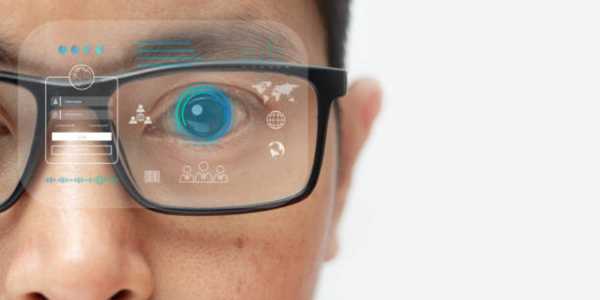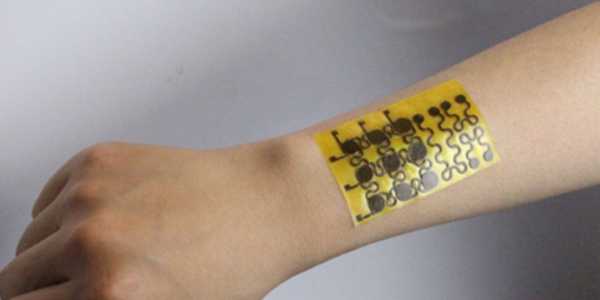These days, when my mind ponders wearable technology, the gadgets that immediately come to my head are smartwatches or fitness trackers. But the future has some amazing possibilities—in the form of glasses that can superimpose information onto the world around us, or e-skin that can change the way we interact with technology. As these advancements develop, they are not just changing gadgets, but how we go through our day and our perception of reality itself.
Smart Glasses: A Paradigm Shift in Visual Experience
Picture stepping out of your home and having directions, messages, or even historical facts about your surroundings dropped right in front of you. Smart glasses are not limited to serving solely as novelty items. They are an increasingly important tool that enables users to seamlessly integrate the digital and physical worlds. Unlike modern screens that box us into a certain space, smart glasses set us free by allowing us to see the digital world enhance our physical environment.

Prototypes today are able to send heads-up notifications, perform real-time language translations, and even allow for augmented reality (AR) gaming. What is even more interesting is the possibility of these smart glasses being able to assist users to perform daily tasks like guiding users with visual impairment through busy streets or providing contextual information in workplaces. The aspects in which these devices can be used are very encouraging and also provide a new perspective on how we receive information and interact with our surroundings.
E-Skin: The Next Frontier in Human-Machine Interaction
As smart glasses enable users to have an altered view of the world, e-skin is going to change the way we would like our bodies to interact with technology. E-skin is basically defined as elastic, stretchable electronic materials which can function like human skin. These innovations can be used in the form of patches or even clothing pieces that can detect vital signs or even changes in the environment.
The possibilities of using e-skin in the field of health is one of its most fascinating features. Envision an imperceptible, lightweight patch that can monitor your blood glucose level, hydration, or heart rate in real time, notifying you and your doctor if something out of the ordinary comes up. It could ease the burden of having to take care of chronic illnesses and improve precision in managing one’s health. Aside from the medical applications, e-skin could also find uses in robotics and virtual reality, allowing machines to have a “feeling” aspect and improving immersion in the virtual world.
Bridging the Gap: Comparing E-Skin to Smart Glasses
On first consideration, e-skin and smart eyeglasses appear to be two completely different types of wearable technology. Yet both of them set out to achieve the same purpose of integrating technology in our daily life without disrupting our activities. Let’s explore their similarities and differences.
These technologies share the primary objective of providing the user with real-time, continuous data. Smart glasses achieve this through visualization by adding information to our visual field while e-skin endeavors to do so via real-time monitoring of a user’s body and surroundings. So, while the mode of engagement may be different, both are able to provide the user with contextual information immediately.
There exists the problem of design philosophy too. Smart glasses emphasize on improving our external perception – assists in seeing, understanding, and navigating easily. E-skin, on the other hand, revolves around covering the human skin where one can integrate technology deeply within the body to improve one's ability to monitor and react to internal stimuli. Although their methods differ, both are working independently towards the same goal, that of erasing the barrier between the tangible and the digital world, in addition to making the interaction with technology more user friendly and instinctive.
Effects On Everyday Life And More
The incorporation of such advanced wearable devices stands to benefit various aspects of society. For example, businesses would greatly enhance their operations through the fast access to information and collaboration and training offered by smart glasses. Visualize technicians wearing smart glasses and receiving step-by-step instructions on how to fix something. Imagine a surgeon getting information on critical parameters such as temperature and heart rate while performing an operation.
Applying these technologies can significantly increase efficiency in work and add a layer of protection and precision in sensitive tasks.

At the same time, e-skin has the potential to revolutionize the management of personal health. Individuals can, for the first time, monitor their health and well-being in exquisite detail thanks to continuous and unobtrusive monitoring. This technology has the ability to notify the user of potential health issues before they get serious, minimize the number of visits to hospitals, and even set the stage for customized medicine based on an individual’s unique profile.
With these devices collecting enormous amounts of data, there is also the prospect of leap in research and comprehension of the human body which is equally astonishing.
Nonetheless, the advantages are accompanied by difficulties. One of the most important areas is privacy; when devices are perpetually gathering data, personal information protection becomes critical. But it is not just the users that should be concerned: security must be sufficient to guard against breaches or abuse of confidential information. In addition, as these technologies continue to pervade life, issues of use and cost will have to be raised so that these technologies are useable by a lot of people in the society.
How Culture and Society are Intertwined
With increased use in society, wearable technology is likely to shape many aspects of culture. For example, communication might be altered by smart glasses. People could speak with one another in a more hands-free and convenient manner, without the need to extract their phones. It is easy to picture looking at someone’s glasses and immediately obtaining a summary of their interests and achievements (with their consent, of course). This would enable more constructive interactions, helping bridge the understanding gaps within society’s digital world.
E-skin’s capacity to track and even augment one’s physique could birth a new outlet of self-expression. There could be a blend of technology and fashion, creating a new line of clothes that not only look great, but also serves as a communication tool or a wearable health monitor. The lines between practicality and beauty could result in a fusion celebration of both function and style in wearable technology.
Navigating the Ethical Landscape
Ethical considerations, often overlooked in most industries, are equally important as technical innovations and are as important as new smart glasses or e-skincare technology. The question of surveillance, consent, and even the very definition of human interaction can get complicated.
If we consider the use of smart glasses in businesses, getting information is easy but at what cost? The glasses have the power to record and later share information without any form of consent and that brings privacy into question and creates a dual-use dilemma. Striking the right balance when implementing policies around such features is difficult but there is a way out, robust frameworks to protect privacy while enhancing life through technology Omnicare.

What Lies Ahead in the Wearable Tech Revolution
Regarding the data collected by an e-skin device, anything from subtle clues regarding the health condition of a person to extremely vital health-related metrics must be treated with a lot of consideration and delicacy. The line drawn around using the data for healthcare improvement is very thin. The minute a person’s health information starts getting used for commercial or even worst discriminatory purposes, e-skin technologies would have failed. Putting these technologies out in the market will require the developers to outline ethical boundaries and policies.


